Phones keep getting bigger, and for a lot of people, that’s a good thing: more room for content, productivity, and games. The Samsung Galaxy S25 FE leans into that trend, borrowing much of the Galaxy S25’s DNA but undercutting the flagship on price. The real question: which gives you the better day-to-day experience, and which of these is the better value-for-money device?
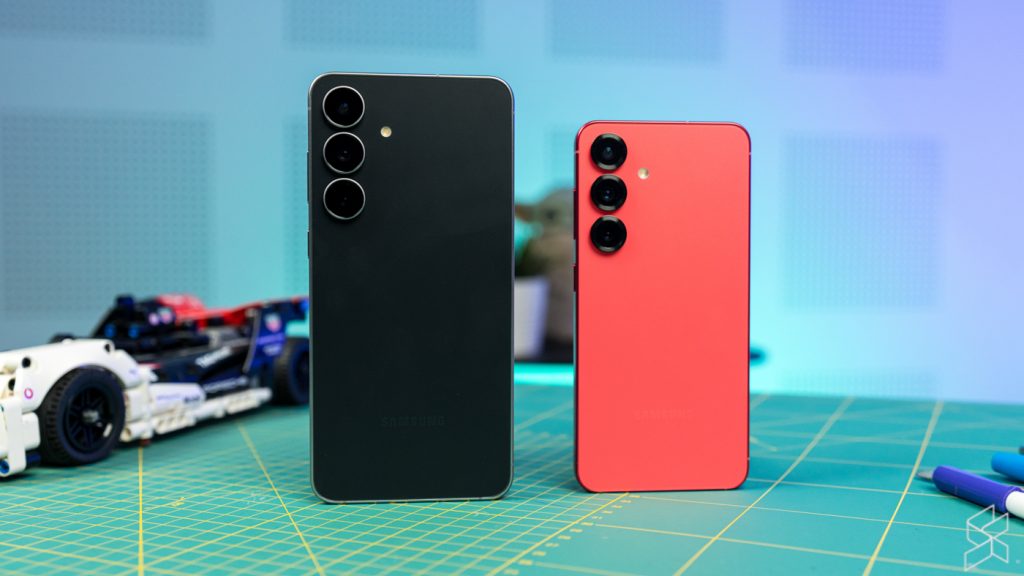
Before we jump-start the comparison between the Galaxy S25 FE and Galaxy S25, here’s a quick look at their specs:
| Galaxy S25 FE | Galaxy S25 | |
| Display | 6.7” (2340×1080) 120Hz Dynamic LTPO AMOLED 2X | 6.2″ (2340×1080) 120Hz Dynamic LTPO AMOLED 2X |
| Chipset | Samsung Exynos 2400 | Qualcomm Snapdragon 8 Elite for Galaxy |
| RAM | 8GB | 12GB |
| Storage | 256GB/512GB | 256GB/512GB |
| Cameras | 50MP main, 12MP ultra-wide, 8MP telephoto, 12MP selfie | 50MP main, 12MP ultra-wide, 10MP telephoto, 12MP selfie |
| Battery | 4,900mAh | 4,000mAh |
| Charging | 45W wired, 15W wireless | 25W wired, 15W wireless |
| Software | One UI 8 (Android 16) | One UI 8 (Android 16) |
| Connectvity | 5G, WiFi 6E, Bluetooth 5.4, NFC | 5G, WiFi 7, Bluetooth 5.4, NFC |
| Ingress protection | IP68 | IP68 |
Build Quality & Screen: Big Screen or Compact Size? You Choice
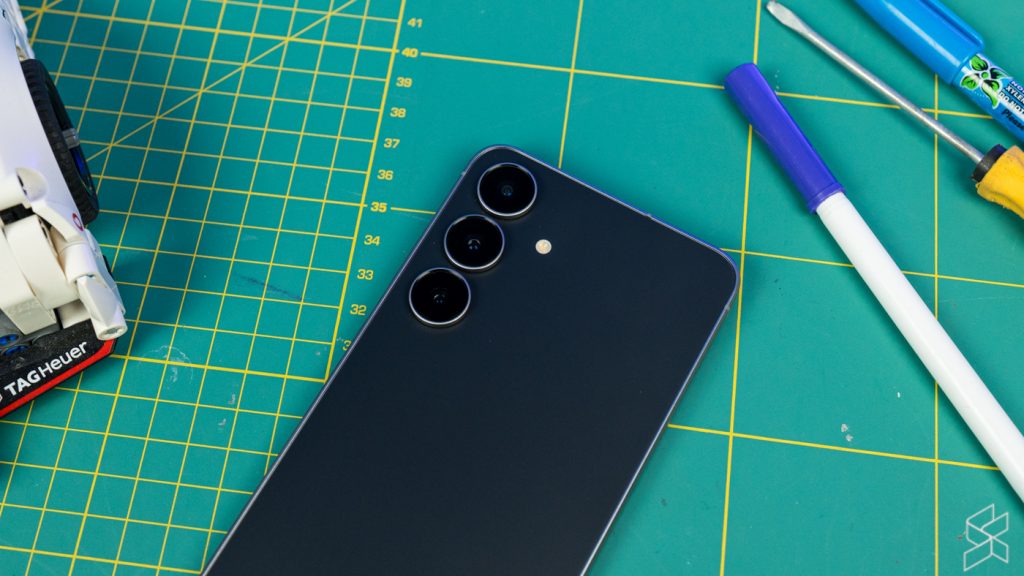
Despite being positioned below the Galaxy S25 in Samsung’s lineup, the brand didn’t cut corners on the Galaxy S25 FE. You still get the same glass-and-aluminium build as the S25, along with the IP68 rating for dust and water resistance.
Where the Galaxy S25 truly shines is in one-handed usability. In 2025, it’s refreshing to find a flagship this light and easy to handle, perfect for quick use on the go or when one hand is occupied on public transport.
I rarely needed to perform any hand gymnastics to reach all four corners of its 6.2-inch 120Hz LTPO AMOLED 2X screen. Despite its compact size, it delivers a superior audio experience to the FE model, with a pair of stereo speakers that produce crisper sound with more depth and clarity.
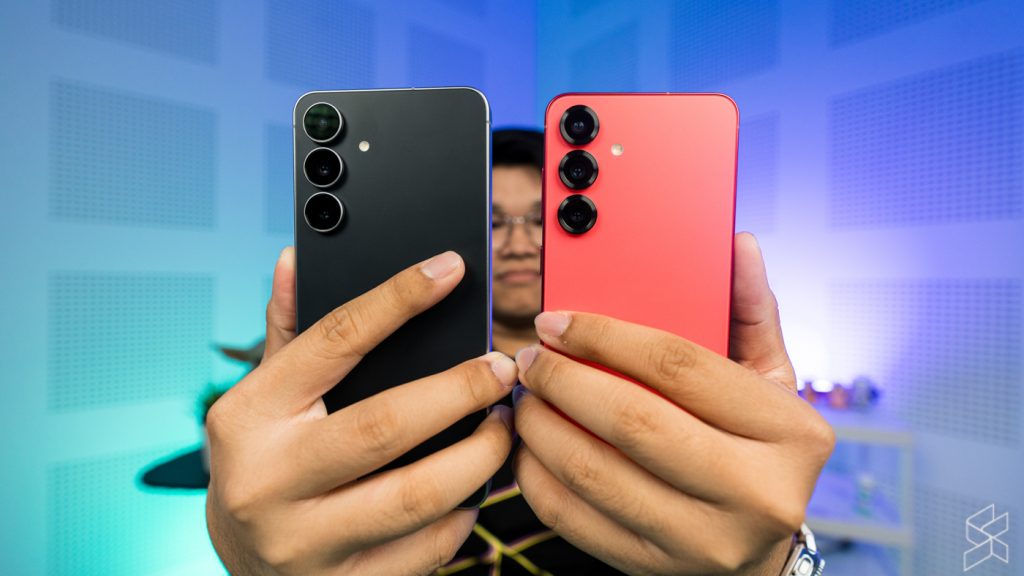
The Galaxy S25 FE, with its larger 6.7-inch display, may require a bit more stretching, or even two-handed use, but it uses the same resolution and LTPO technology as the S25. This results in an excellent experience for watching videos and playing games. The extra screen real estate also makes reading, editing documents, and multitasking easier, positioning the FE as a more productive device than its smaller sibling.
Performance: Galaxy S25 Flexes its Flagship Superiority
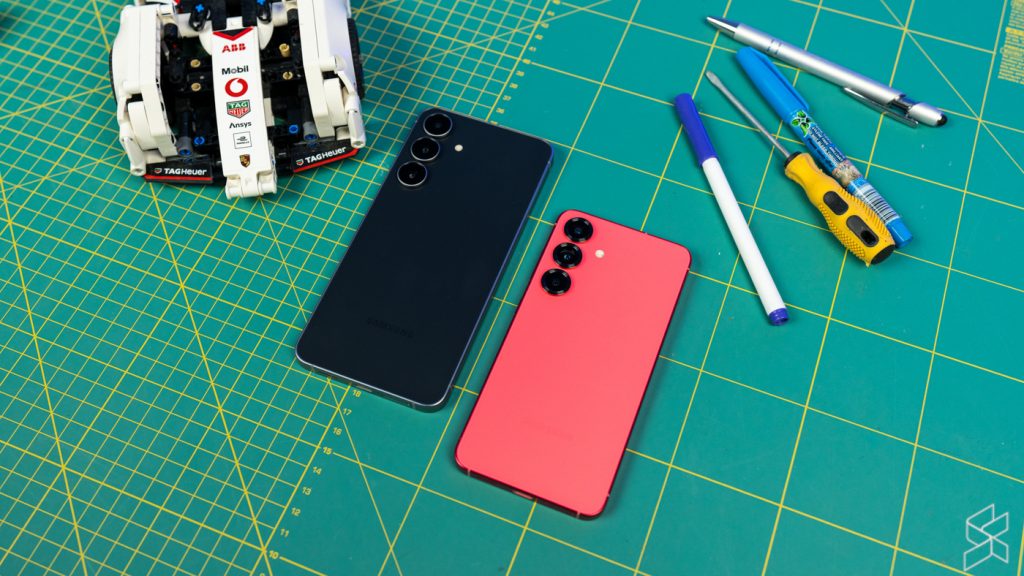
Powered by Qualcomm’s Snapdragon 8 Elite for Galaxy SoC, the Galaxy S25 flexes its flagship muscles, easily outpacing the Galaxy S25 FE, which runs on the Exynos 2400 — the same chip found in last year’s Galaxy S24 and S24+. In benchmark testing, the S25 consistently came out ahead: it completed the AnTuTu Benchmark test faster, scoring 2,954,827 compared to the FE’s 2,073,912.
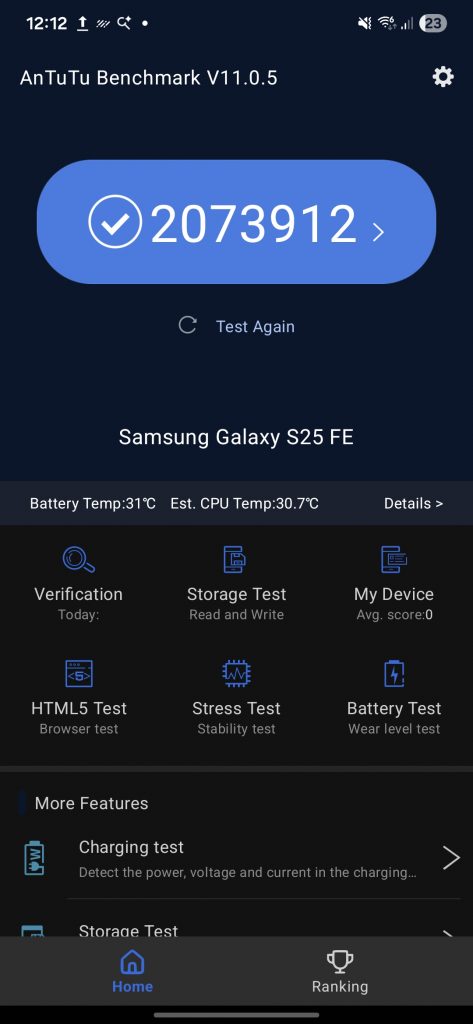

On 3DMark’s Wild Life Extreme GPU benchmark test, the Galaxy S25 posted a 6,122 score versus 4,046 on the FE, and Geekbench 6 results told a similar story — the Snapdragon-powered S25 led comfortably in both single- and multi-core performance.
So what does this mean in everyday use? Simply put, the Galaxy S25 is the more powerful device. But for most users — texting, scrolling through TikTok, streaming Netflix, taking photos, or casual gaming — the Galaxy S25 FE delivers more than enough performance. It’s also significantly faster than the Exynos 1580 found in Samsung’s top A-series phone, the Galaxy A56.
That’s not to say the S25’s extra horsepower is unnecessary. Its Snapdragon 8 Elite for Galaxy chipset provides smoother, faster performance for heavy tasks like high-end gaming or rendering 4K and 8K video. It should also maintain this responsiveness longer over the years, provided you’re okay with its smaller, more compact screen.
Cameras: Same, Same, but Different?
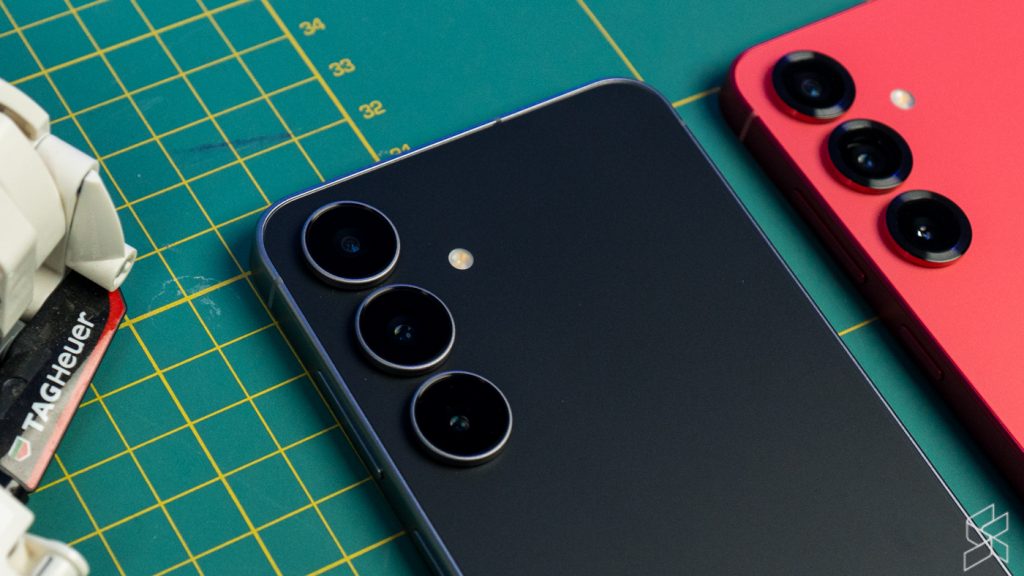
Now, in terms of cameras, both the Galaxy S25 and S25 FE sport a mostly similar camera setup, with the main difference being a slightly higher-resolution 10MP telephoto camera on the Galaxy S25, as compared to the S25 FE’s 8MP unit.
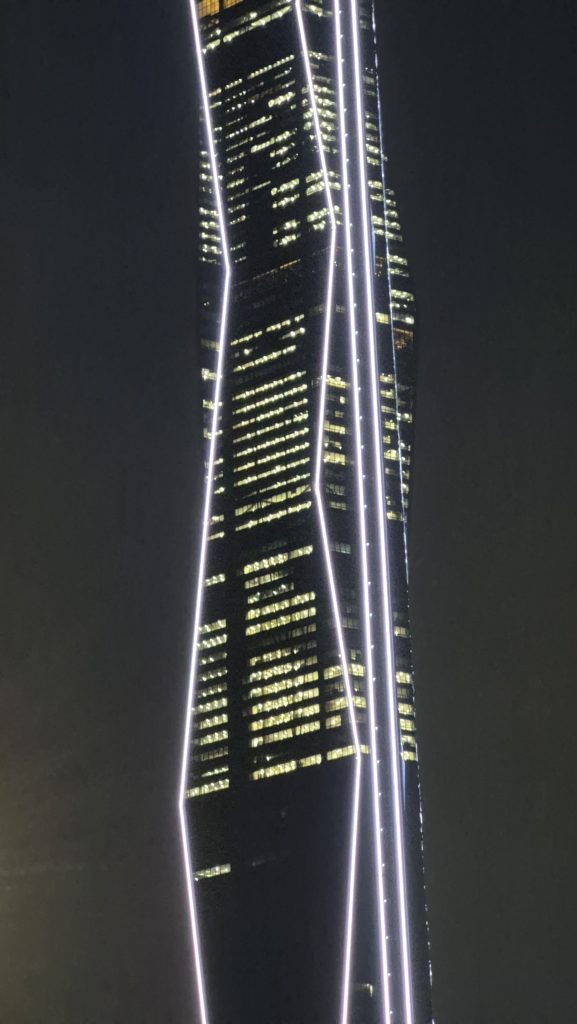



This resulted in significantly more details and less noisy-looking pictures from the Galaxy S25 when taking pictures of faraway objects, including in low-light situations. Beyond telephoto, the Galaxy S25 also produced more accurate and natural colours that better reflect what I saw in real life with its main and ultra-wide-angle sensors.






However, photos taken using the Galaxy S25 very often yielded inconsistent results, resulting in washed-out, paler-looking subjects. When shooting street photos at night, the Galaxy S25 also tend to overexpose bright objects such as streetlights, creating starburst effects and lens flare. Though the S25 FE also suffered the same issue at times, the S25 was the more frequent offender in this regard.
Despite featuring a weaker telephoto sensor, I noticed that the Galaxy S25 FE tends to boost contrast and result in more saturated-looking photos.


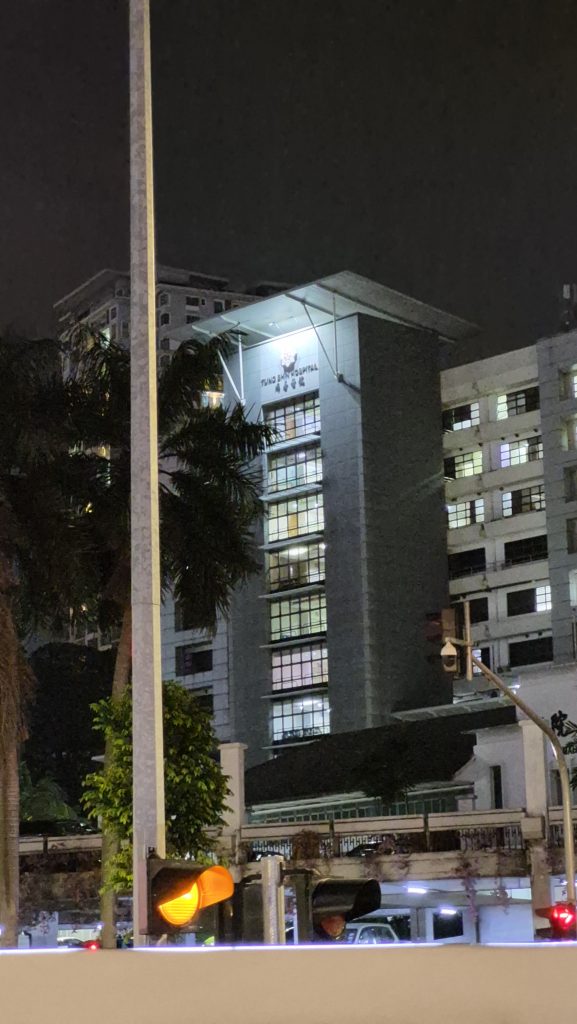
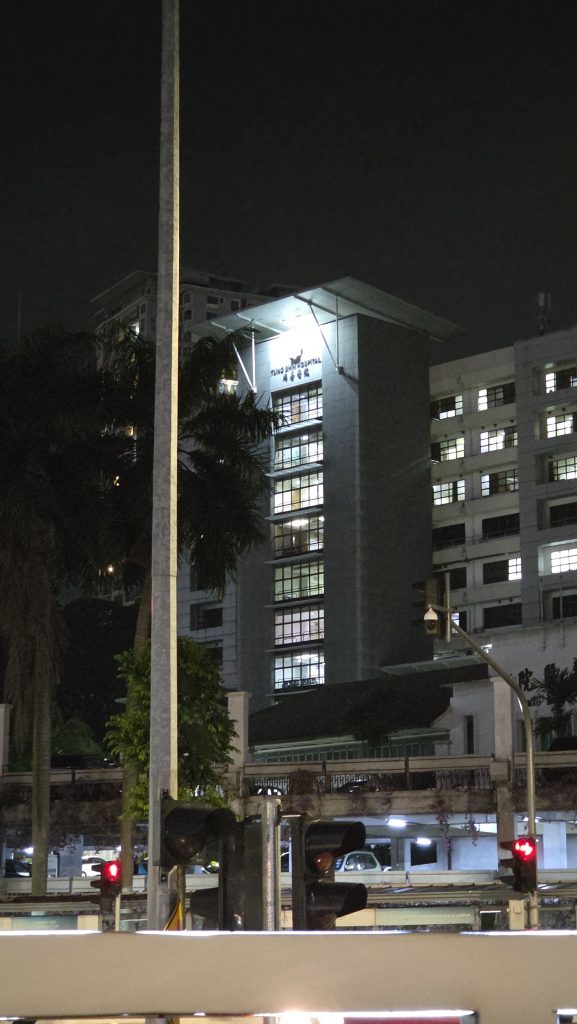


In the video department, both devices can record videos at up to 8k 30fps using their main 50MP shooters, with 4k 60fps videos supported by the rest of their sensors. Footages taken by the Galaxy S25 FE and S25 look relatively stable with good contrast and noise control, though still not at the same level as iPhones, which still marks the golden standard in the industry.
More sample photos taken with the Galaxy S25 FE





Battery & Charging: FE Takes The Crown

Bigger phones usually come with bigger batteries, and the Galaxy S25 FE is no exception. It houses a 4,900mAh cell, a modest increase over its predecessor’s 4,700mAh unit, but still a welcome upgrade. This difference is especially notable when compared to the regular Galaxy S25, which packs a smaller 4,000mAh battery.
In real-world use, both phones easily lasted a full day. The compact S25 offered nearly 7 hours of screen-on time, while the FE stretched closer to 9 hours. This included a mix of YouTube, social media, photography, and even running benchmarks on AnTuTu, 3DMark, and Geekbench.


Samsung has never been known for ultra-fast charging, unlike some Chinese competitors reaching 80W or even 100W, including wireless. Still, the Galaxy S25 FE now supports 45W wired charging via USB-C, matching Samsung’s top-tier Galaxy S25 Ultra.
It’s not the fastest in its segment, but it’s a meaningful jump from its predecessor’s modest 25W limit. Oddly enough, the regular Galaxy S25 still uses slower charging, making it somewhat ironic that the “lower-end” FE model charges faster than its flagship sibling. As for wireless, both can handle 15W via a Qi wireless charger.
Software: Top-notch Android Skin + Top-notch Software Support

Samsung has really nailed it with recent versions of One UI. Both the Galaxy S25 FE and S25 run on the latest One UI 8, built atop Android 16, and are promised up to 7 years of major OS and security updates. This places Samsung among the best in the industry for software support, alongside Google and Honor, and even surpasses Apple’s usual, but undocumented, 5-year support for most iPhone models.
One UI 8 is cleanly and tastefully designed, smooth in daily use, and highly versatile. Its Galaxy AI suite offers practical tools like generating emails or artwork, removing photobombers from pictures, or eliminating traffic noise from videos. Android 16 adds Google’s clever Circle to Search feature and the Gemini AI assistant, further enhancing usability. Together, these features demonstrate just how far Apple still has to catch up in the AI game.
Galaxy S25 FE: Best Value Samsung Phone in 2025?
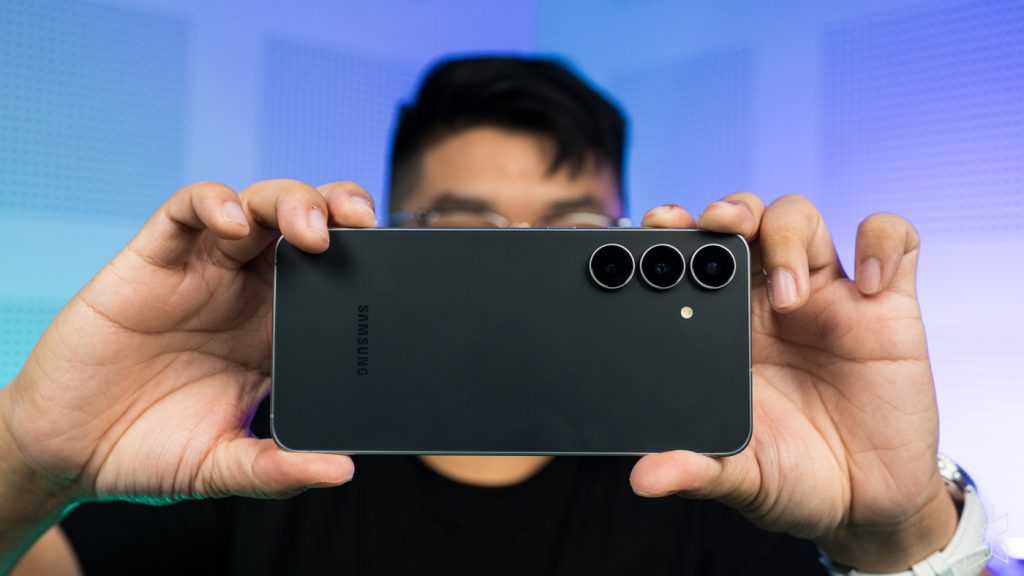
So, is the Galaxy S25 FE the best value-for-money Samsung smartphone in 2025? Let’s break it down by price and features before reaching a conclusion.
As of mid-November 2025, the Galaxy S25 FE can be found online for as low as RM2,549 for the entry-level 256GB configuration, via e-commerce platforms such as Shopee. Meanwhile, with the Galaxy S26 series expected in less than six months, the Galaxy S25 has received price cuts on platforms like Lazada, dropping to around RM3,098 for the base 256GB storage option, which is a substantial RM900 price reduction from its launch price.

Considering its larger display, longer battery life, faster charging, and lower price, the Galaxy S25 FE clearly offers better value for most users and is easily my choice of device between the two. That said, if raw performance and portability are your top priorities and you don’t mind the smaller battery, slower charging, and slightly higher price, the Galaxy S25 remains the better choice.
As a fan of compact phones, it’s bittersweet to note that the Galaxy S25 may be Samsung’s last compact flagship. Still, in a world where smartphones are used for more than just communication, the trade-off for larger devices with better productivity and media capabilities is understandable.
Which one would you pick? Share your thoughts in the comments below.
0 comments :
Post a Comment